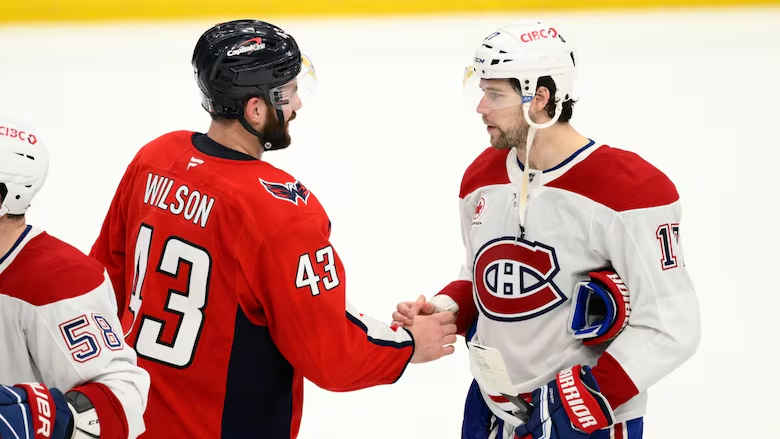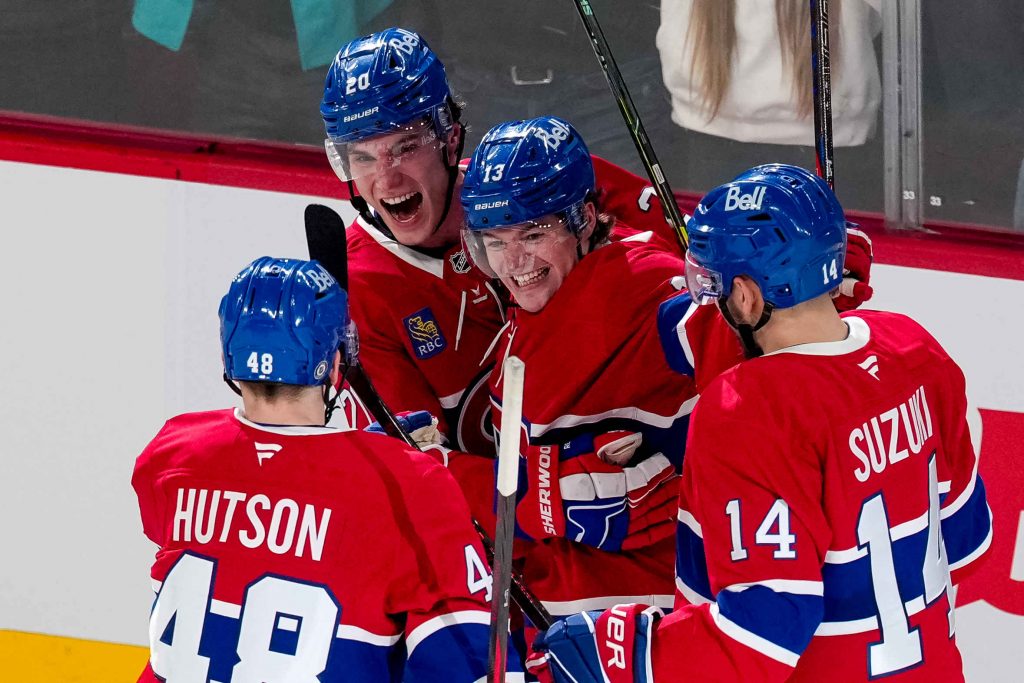The Montreal Canadiens made meaningful strides during the 2024–25 season. For the first time since 2021, they earned a playoff berth, showcasing the growing potential of their youthful roster. Yet, their journey ended abruptly in the first round after falling to the Washington Capitals in five games. While the result stings, the broader picture suggests a team at the cusp of sustained competitiveness. Now, the focus shifts to what this early exit reveals—and how it will influence the organization’s strategy as it enters a pivotal offseason.

Development Took Center Stage in 2024–25
This year was never about a Stanley Cup run. It was about progress. Nick Suzuki led with poise, embodying the leadership qualities essential for a rebuilding team transitioning into a playoff contender. Cole Caufield found his scoring rhythm after a slow start, while Lane Hutson, one of the league’s most talked-about rookies, emerged as a key piece on the blue line.
More importantly, the Canadiens demonstrated that their foundation is sustainable. The roster’s average age hovered under 26, making them the youngest team to reach the postseason. Though they lacked the veteran edge to close out tight games, the experience gained under playoff pressure cannot be overstated.

Key Areas for Offseason Upgrades
The first-round exit exposed several gaps, none more pressing than the need for depth at center. While Suzuki anchors the top line effectively, the club struggled to generate consistent offense beyond the first unit. Injuries and inconsistent performances from supporting forwards magnified the issue.
General Manager Kent Hughes is expected to be active in both the trade market and free agency. With substantial cap flexibility and expiring contracts, the team has room to maneuver. A proven second-line center who can distribute the puck and contribute defensively will be near the top of the Canadiens’ wish list.
Defensive structure, though promising in parts, also showed signs of inexperience. While Hutson, Kaiden Guhle, and Arber Xhekaj bring energy and upside, a reliable top-four veteran could bring balance and mentorship. That doesn’t mean halting development—it means insulating young players with the right type of experience.
As the offseason begins to heat up, fans are closely tracking the latest NHL news, hoping to see how Montreal’s front office positions itself in the ever more frantic league-wide activity.
Embracing Youth Without Pressure
The front office has made it clear: this rebuild is being done right. Instead of rushing prospects, Montreal continues to nurture players through a deliberate development pipeline. Names like Joshua Roy, David Reinbacher, and Filip Mesar are knocking at the NHL door but won’t be rushed into permanent roles until they’re ready to contribute meaningfully.
This approach fosters healthy competition and keeps expectations measured. However, next season may require the team to take calculated risks with its talent pool. As the Canadiens aim to push deeper into the playoff picture, it’s likely that one or two high-ceiling prospects will earn full-time NHL spots. The key will be surrounding them with stabilizing forces rather than relying on them to drive results.
Financial Flexibility Creates Opportunity
Montreal enters the offseason with an enviable cap situation. Several short-term contracts are set to expire, and the potential use of LTIR provisions creates additional breathing room. This gives Hughes options—he can pursue high-value signings or absorb contracts in exchange for draft picks, depending on how the market unfolds.
Adding to that, the Canadiens hold two first-round picks in the 2025 NHL Draft. This opens the door for draft-day trades, where the club could move up the board or acquire established talent in return. With the rebuild maturing, Montreal may shift from asset accumulation to roster refinement, using its capital more aggressively.
Coaching and Identity Are Stabilizing Factors
One of the most significant takeaways from this season is the continued impact of Martin St. Louis behind the bench. His presence has provided consistency, motivation, and an evolving system that suits the team’s emerging style. Montreal is playing faster, looser, and more creatively under his guidance, which resonates with a younger core.
That said, expectations will grow. St. Louis has enjoyed a grace period, and with a playoff appearance now under his belt, the next step involves building consistency throughout the season. Poor starts and midseason lulls must be minimized. Special teams, in particular, need work. Montreal’s power play ranked near the league’s bottom, and their penalty kill was average. Both must improve to compete deeper into spring.
Eyes on Internal Contracts and Leadership Roles
With Juraj Slafkovský’s breakout year nearly complete, the organization has moved to secure him long-term. His recent $60.8 million extension signals confidence in his trajectory. At just 21, he is quickly becoming a two-way force capable of driving possession and playing heavy minutes. The Canadiens are betting that his best is still ahead.
The leadership core—Suzuki, Caufield, and now Slafkovský—sets the tone for the locker room. These players are growing into their responsibilities while modeling the work ethic expected of new arrivals. That internal culture matters. As veteran pieces are rotated out, the Canadiens will need that trio to enforce standards and guide younger players.
Planning for the 2025–26 Campaign
This upcoming season will be about taking the next step up. That doesn’t mean Cup contention, but it should mean moving beyond a wild-card chase. A top-three division finish, more consistency on home ice, and improved late-game execution should be realistic goals. The Atlantic Division remains stacked, but Montreal now knows how it stacks up.
Much of that improvement will hinge on roster health, forward depth, and whether offseason acquisitions address clear shortcomings. If goaltending stabilizes—either through internal growth or external help—the Canadiens could become one of the East’s most frustrating teams to play against. Their physical edge, skating ability, and growing poise make them a club on the rise.
With attention already shifting to teams still in the race, some fans are following closely—not just for entertainment, but also for insights into betting on the NHL playoffs, especially as Canadian rivals push deeper. Montreal’s performance this year and their potential next season are already shaping conversations around how the Eastern Conference may evolve.
Momentum Doesn’t Vanish, It Builds
The Canadiens’ early playoff departure wasn’t the outcome fans hoped for, but it revealed critical truths. The Canadien’s roster is no longer a basement dweller. It’s young, hungry, and capable. With smart moves this summer and continued patience in development, 2025–26 could be the year Montreal truly reclaims relevance in the Eastern Conference.
The foundation is built. Now comes the part where expectations return—and so does pressure. If the Canadiens embrace both, they’ll be ready for whatever comes next.
